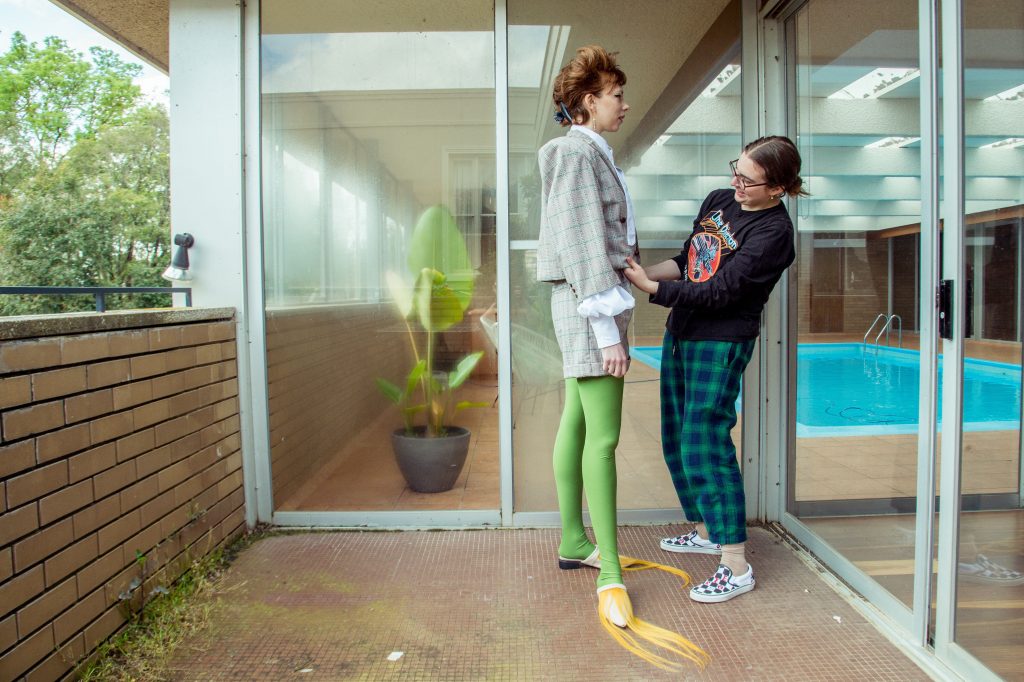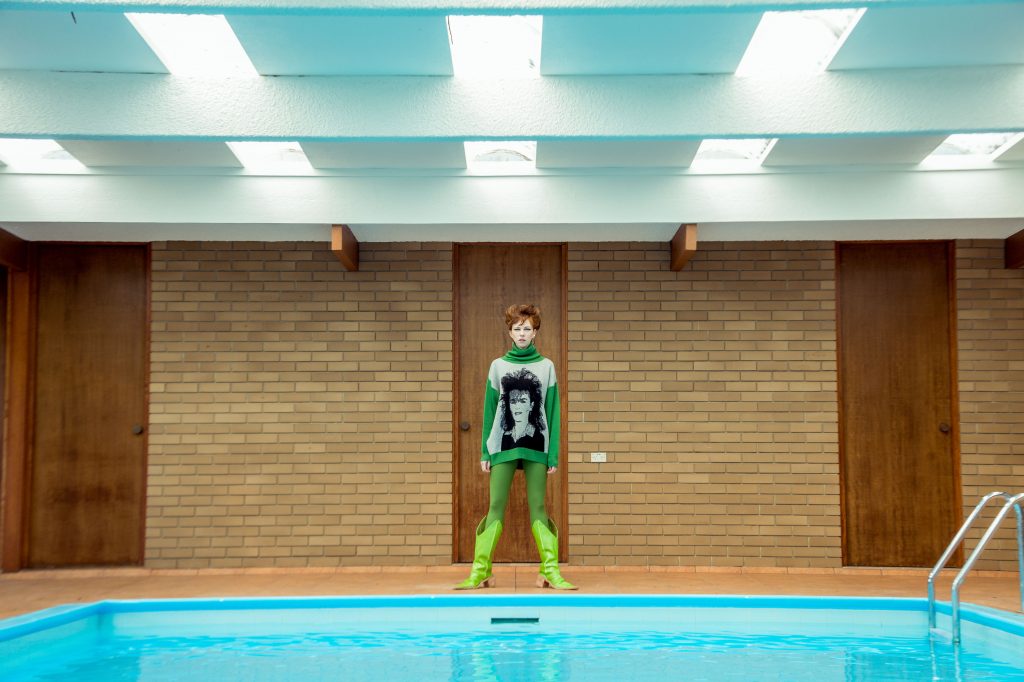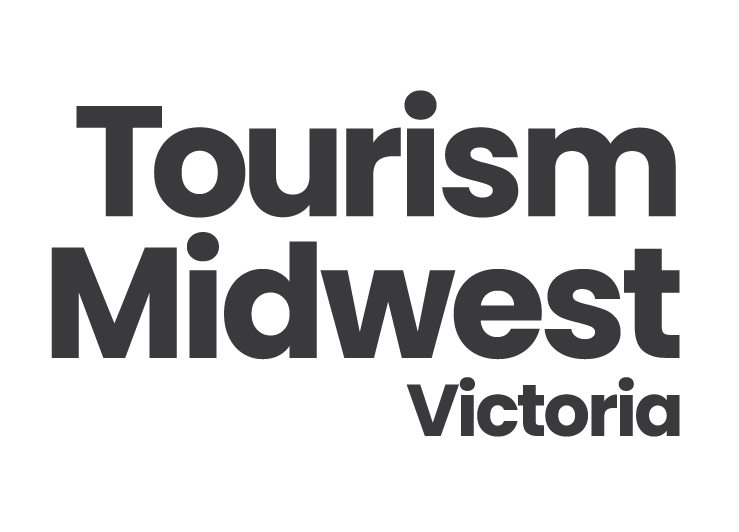Start typing to search
You can also hit “Enter” on your keyboard to submit your query.
0What's on
0Everything Else
The fashion designer: Jordyn Smith
Visit Ballarat
16 Feb 2021
Filed underMakers & Growers
Much to her mother’s detestation, local fashion designer Jordyn Smith knew she was onto something when she discovered an old school photo of her mum.
Now the portrait sits pretty on the front of a sweater, and it’s got the whole fashion industry talking.
We caught up with Jordyn to see where she draws her very cool inspiration from and to talk about what she loves most about her home town.

What drew you to textiles?
I grew up around industrial sewing machines, and local manufacturing, plus my Mama (grandma) has had her own business long before I was born and I spent a large portion of my time with her as a child.
I always enjoyed ‘making’ things, and using the machines once I was allowed to.
However, I originally studied Psychology for a semester in 2012 and quickly realised that I need to be working with my hands. One gap year of full-time work and overseas travel later, I finally realised that my younger self was right in thinking that working within the fashion industry is where I would like to be.
An associate degree, a bachelor degree and now honours, and here I am.
What inspires your work?
I’ve always worked with a narrative or a physical idea to bring about my design concepts, it helps having something tangible to work back to if I’m feeling stuck.
For my most recent body of work, Fashion’s Prometheus, I’d initially brought the school photo of my mum in year 10 to uni as part of a first assessment; I think a part of me knew from then that photographs/found photography would be a big influence on my collection.
I began collecting photographs, and wanted to give their narratives another life. Found garments also majorly contribute to the silhouette development, as I combine them together to create something new.
Does Ballarat itself inspire you, particular given its strong history of women in textiles? (We’re thinking right now of the Lucas Girls)
Very much so. I have an avid interest in our once-flourishing textile industry, it’s history and how it’s evolved over the past century. Over the years we’ve unfortunately lost a lot of the textile industry skillsets as the factories could no longer sustain themselves, and I think it’s vitally important to help hold onto those who remain. So, I’m always inspired by any of the creatives who have held on tight and continue to push through into the future.
Fun fact! My grandma’s first job was at the Lucas factory – so it makes sense that I always want to learn as much as I can about our textile history, and how we can propel it further! The support that Interknit, Greenhalghs Tannery and the likes have provided me is something that I want to ensure I also provide straight back into my own community. Support and encouragement as a team is much more exciting than working by myself!
Tell us about your method of work which we hear you refer to as ‘Frankensteining’?
It started as a way to toile with found garments and create new ones. Rather than spend copious amounts of time and wasting calico trying to get things right, I could ‘Frankenstein’ existing objects together to make it easier to then think about volume, scale and size when I recreated my own pieces.
The first garment I ever made using this method is my favourite thus far, and the best part is that you end up with a usable garment from the beginning – I combined this hilarious ruffled wedding jacket with a bodice from a wedding dress and created an adjustable corset; I then remade the final in deadstock velvet and vintage houndstooth fabric.
But as I have developed this idea, I realise it encompasses essentially how my design process works fully. I’ll use deadstock or vintage fabric, or repurpose things like curtains, use imagery from found photographs, build silhouettes from existing garments, add in an element that’s been collaborated on with another creative, use antique laundry pins as fasteners, tear images from magazines and combine it all together to create a final piece.
I used to call my work ‘a mess’, now I call it Frankensteining.
We can’t get enough of your ‘Mum’ sweaters, where did this idea come from?
Part of my collection was inspired by found images I’d collected from secondhand stores. But I’ve always loved this particular image of my mum (as much as she despised it!). I really wanted to use it in my collection somehow, and when I was awarded the Wool Education Trust Scholarship and began reaching out to Interknit, I just knew I needed to make it happen!

What does Ballarat as a UNESCO Creative City of Craft and Folk Art mean to you?
I think it’s fantastic that Ballarat is being recognised on such a global level regarding our creative practices. One of the most exciting things about our town is our ability to utilise our ‘everyone knows everyone’ small town ideals and work together to create. The more people we can encourage to partake and invest themselves in our creative endeavours the better!
For those interested in textiles, what piece of advice do you have for them?
Don’t be afraid to ask questions. Research, find people who you’d like to talk to about your work with. Find those like-minded people who you can work with, and hold them tight – These creative collaborators will be some of the best people you’ll meet.
And to wrap up, what’s Ballarat best kept secret?
Hands down our straight from the 80s bowling alley. I’m a sucker for anything or anywhere that’s essentially a time capsule. I’ll riot if anyone ever tries to update it!
The feature image was captured at Melbourne Fashion Week in 2019 by photographer Lucas Dawson.
Learn more about Jordyn online at jordmsmith.com
